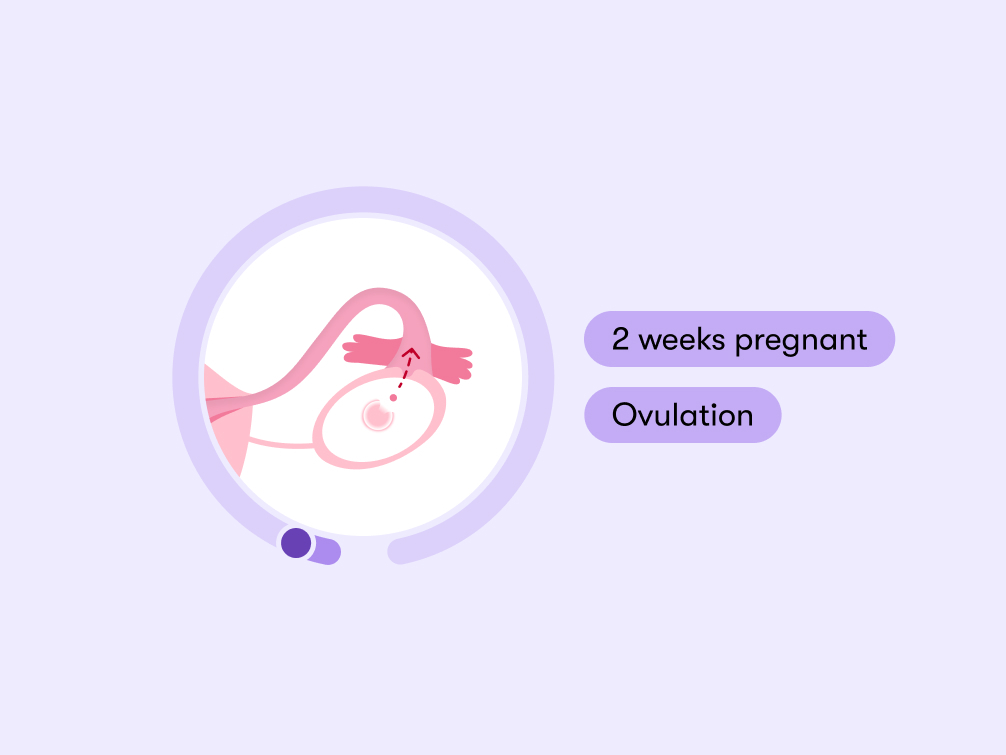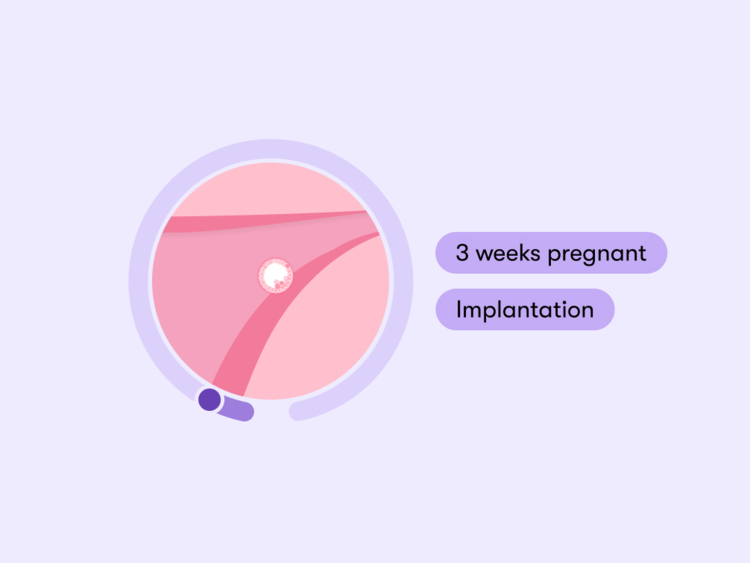As an Amazon Associate, I earn from qualifying purchases.
The growth and development of a Baby Measuring 3 Weeks Behind during pregnancy is a crucial period, and any deviation from the expected growth can be alarming. We will explore possible factors such as incorrect dating of pregnancy, genetic conditions, placental insufficiency, or maternal health issues that may contribute to a baby measuring behind.
It is important to consult with a healthcare professional to accurately assess the situation and determine the best course of action for a healthy pregnancy and baby.

Credit: Flo. health
What Does It Mean To Measure 3 Weeks Behind?
Baby measuring 3 weeks behind means the size of the baby is smaller than expected for the current stage of pregnancy. This could indicate potential issues with growth and development, prompting close monitoring and medical intervention to ensure the well-being of both the baby and the mother.
Introduction
When it comes to a baby’s growth during pregnancy, measuring behind can be a cause for concern. In this article, we will explore what it means to measure 3 weeks behind and delve into the causes, risks, and concerns associated with this situation.
Causes Of Measuring Behind
Several factors can contribute to a baby measuring behind in the womb:
- Genetics: In some cases, a baby may simply take after their parents’ smaller stature.
- Incorrect due date: The estimated due date is based on the first day of the last menstrual period and can sometimes be miscalculated, leading to the appearance of measuring behind.
- Slow growth rate: Some babies may experience slower growth due to a variety of reasons, such as placental problems, maternal health issues, or restricted blood flow.
- Multiples pregnancy: Carrying twins or multiples can affect the growth of individual babies, resulting in one or more measuring behind.
- Poor nutrition or health conditions: Maternal factors like poor nutrition, smoking, substance abuse, or having an underlying health condition can impact fetal growth.
Risks And Concerns
While measuring behind can be attributed to various causes, it’s important to understand the potential risks and concerns associated with this situation:
- Intrauterine Growth Restriction (IUGR): In some cases, a baby measuring behind may be experiencing IUGR, which can lead to inadequate nutrition and oxygen supply, affecting their overall development.
- Increased risk of complications: Babies who measure behind have a higher chance of experiencing complications during delivery, such as low birth weight, difficulty handling stress, meconium aspiration, and an increased need for medical interventions.
- Long-term effects: Babies who experience growth restriction in the womb may be at a higher risk of developmental delays, learning disabilities, and chronic health conditions later in life.
It’s important to note that measuring behind by itself does not automatically indicate a poor outcome. Many babies catch up in growth after birth and go on to have healthy lives. However, it is crucial for healthcare providers to closely monitor the baby’s progress and take appropriate actions to ensure the well-being of both the mother and the child.

Credit: Flo. health
Signs And Symptoms Of Measuring Behind
If your baby is measuring 3 weeks behind, it may be a cause for concern. Look out for signs and symptoms such as slow growth, decreased movement, and abnormal heart rate. Consult your healthcare provider for a thorough evaluation and guidance.
During pregnancy, it’s natural to closely monitor the growth and development of your baby. However, if your baby is measuring behind, it’s essential to understand the signs and symptoms that may indicate this. Paying attention to these cues can help you ensure the well-being of your little one. Here are specific signs and symptoms to watch out for:
Slower Or No Fetal Movement
One of the signs that your baby might be measuring behind is slower or no fetal movement. Typically, babies become more active as they grow. However, if you notice a decrease in their movements or if they’re not moving at all, it could indicate that their growth is lagging. It’s crucial to consult your healthcare provider to evaluate the situation and ensure your baby’s overall health and development.
Smaller Fundal Height
Fundal height refers to the distance between the top of your uterus and the pubic bone. It’s commonly measured during prenatal check-ups to track the growth of your baby. If your baby is measuring behind, your healthcare provider may notice a smaller fundal height compared to what is expected for the specific gestational age. This discrepancy may indicate that your baby’s growth is slower than average. Regular monitoring and additional tests may be recommended to properly assess your baby’s progress.
Diagnosing And Monitoring A Baby Measuring 3 Weeks Behind
When you find out that your baby is measuring 3 weeks behind during a prenatal check-up, it can be a cause for concern. Understanding how to diagnose and monitor the situation is key to ensuring the well-being of both you and your baby. In this article, we will explore the process of diagnosing and monitoring a baby measuring 3 weeks behind, providing valuable information and peace of mind.
Ultrasound Imaging
One of the primary methods used to diagnose a baby measuring 3 weeks behind is through ultrasound imaging. Ultrasound uses high-frequency sound waves to create images of the fetus inside the womb. During an ultrasound examination, the technician will carefully measure different aspects of your baby’s growth, such as the head circumference, abdominal circumference, and femur length. These measurements are then compared to standard growth charts to determine if your baby is indeed measuring behind.
Fetal Growth Monitoring
Once a baby has been diagnosed as measuring 3 weeks behind, close monitoring of fetal growth becomes vital. Your healthcare provider may recommend more frequent ultrasound examinations to track your baby’s growth progress. These scans will continue to measure key parameters and compare them to expected growth rates for the corresponding gestational age. By closely monitoring the baby’s growth, any changes or concerns can be identified promptly, allowing for appropriate interventions if necessary.
In addition to ultrasound imaging, other methods of monitoring your baby’s growth may include:
- Kick Counts: Keep track of your baby’s movements, which can be an indicator of their well-being.
- Measuring Fundal Height: This involves the measurement of the distance between your pubic bone and the top of your uterus. A smaller fundal height than expected could indicate slower growth.
- Doppler Flow Studies: These specialized tests use ultrasound technology to assess blood flow to the placenta and various fetal vessels, providing valuable insights into the baby’s overall well-being.
Remember, every pregnancy is unique, and there can be various reasons why a baby might be measuring behind. It is essential to work closely with your healthcare provider to thoroughly understand your baby’s specific situation and to receive appropriate guidance and care.

Credit: milk-drunk.com
Treatment And Management Options
When a baby is measuring 3 weeks behind in growth, it’s essential to consider treatment and management options to ensure the health and well-being of the baby and the mother.
Close Monitoring
The primary approach to managing a baby measuring 3 weeks behind involves close monitoring of the baby’s growth and the mother’s health. This includes regular prenatal check-ups, ultrasound scans, and fetal monitoring to track the baby’s development and detect any potential issues early on. Additionally, close monitoring allows healthcare providers to assess the need for potential interventions based on the baby’s progress.
Potential Interventions
In cases where a baby is significantly behind in growth, healthcare providers may consider various interventions to support the baby’s development and ensure the mother’s well-being. Some potential interventions include implementing dietary changes or supplements to support the baby’s growth, scheduling more frequent prenatal visits for close monitoring, and in some cases, recommending early delivery if the risk to the baby’s health becomes significant.
Frequently Asked Questions On Baby Measuring 3 Weeks Behind
Should I Be Worried If My Baby Is Measuring Small?
If your baby is measuring small, there is no immediate cause for worry. Babies can vary in size and growth rates. However, it’s important to consult with your doctor to ensure your baby’s health and development are on track.
What Is The McDonald’s Rule?
The McDonald’s rule refers to a guideline for writing website content that is concise, SEO-friendly, and engaging. It emphasizes writing in an active voice, using short sentences with a maximum of 20 words each. The goal is to create unique and easy-to-understand content that appeals to both search engines and human readers.
What Happens If Baby Abdominal Circumference Is Less?
A baby with a smaller abdominal circumference may indicate growth restriction or fetal malnutrition. Further medical evaluation is needed to identify the cause and ensure appropriate care for the baby’s health.
Can Fetal Growth Restriction Improve?
Yes, fetal growth restriction can improve with proper medical care and monitoring. Seek guidance from healthcare professionals for personalized treatment.
Conclusion
To sum it up, discovering that your baby is measuring 3 weeks behind can be concerning for any expecting parent. However, it’s important to remember that every pregnancy is unique and growth can vary. Ensure you have regular check-ups with your healthcare provider to monitor your baby’s progress and address any concerns.
Stay positive, stay informed, and trust your medical team’s guidance throughout this journey.
As an Amazon Associate, I earn from qualifying purchases.


1 thought on “Baby Measuring 3 Weeks Behind: The Unlimited Help Guide in 2024”